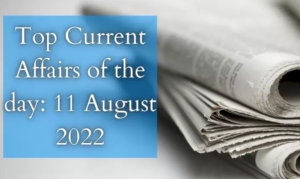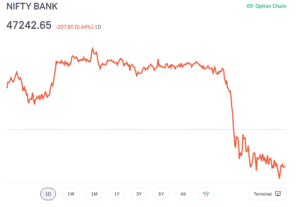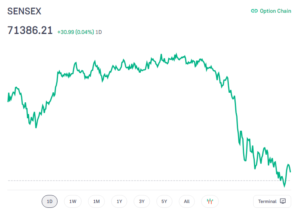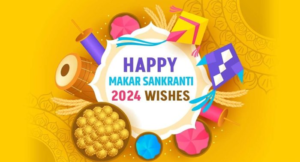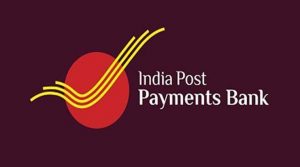
ISSF Junior World Cup 2022: India won 33 medals
International Shooting Sport Federation (ISSF) Junior World Cup 2022 was held at Suhl in Germany. The Indian contingent was led by ace shooters Manu Bhaker and Saurabh Chaudhary. At the ISSF Junior World Cup 2022, the Indian junior shooting team came in first position overall. They won 33 medals in total, including 13 gold, 15 silver, and 5 bronze. With four gold medals, Italy came in second place.
At the last edition of the ISSF Junior World Cup in 2021, India had 43 medals – 17 golds, 16 silvers and 10 bronze – to top the medals table.
India’s medal winners at ISSF Junior World Cup 2022:
Gold
- Simranpreet Kaur Brar and Vijayveer Sidhu – 25m rapid fire pistol mixed team
- Anish Bhanwala, Vijayveer Sidhu and Sameer – men’s 25m rapid fire pistol team
- Manu Bhaker, Esha Singh and Rhythm Sangwan – women’s 25m pistol team
- Sift Kaur Samra – women’s 50m rifle 3 positions individual
- Rhythm Sangwan – women’s 25m pistol individual
- Rudrankksh Patil, Paarth Makhija and Umamahesh Maddineni – men’s air rifle team
- Rudrankksh Patil – men’s 10m air rifle individual
- Shiva Narwal – men’s 10m air pistol individual
- Palak – women’s 10m air pistol individual
- Saurabh Chaudhary, Shiva Narwal and Sarabjot Singh – men’s air pistol team
- Esha Singh-Saurabh Chaudhary – 10m air pistol mixed team
- Manu Bhaker, Palak and Esha Singh – women’s 10m air pistol team
- Arya Borse, Zeena Khitta and Ramita – women’s air rifle team
Silver
- Anish-Tejaswani – 25m rapid fire pistol mixed team
- Pankaj Mukheja and Sift Kaur Samra – 50m rifle 3 positions mixed team
- Shivam Dabas, Pankaj Mukheja, Avinash Yadav – men’s 50m rifle 3 positions team
- Anish – men’s 25m rapid fire pistol individual
- Manu Bhaker – women’s 25m pistol individual
- Shivam Dabas – men’s 50m rifle 3 positions individual
- Abhinav Shaw – men’s 10m air rifle individual
- Ramita – women’s 10m air rifle individual
- Manu Bhaker – women’s 10m air pistol individual
- Palak and Sarabjot Singh – 10m air pistol mixed team
- Ramita and Paarth Makhija – 10m air rifle mixed team
- Sift Kaur Samra and Surya Pratap Singh – 50m Rifle Prone Mixed Team competition
- Shardul Vihaan, Arya Vansh Tyagi and Vivaan Kapoor – men’s trap team
- Sarabjot Singh – 10m air pistol men individual
- Preeti Rajak, Sabeera Haris and Bhavya Tripathi – women’s trap team
Bronze
- Parinaaz Dhaliwal, Darshna Rathore and Areeba Khan – women’s skeet team
- Vijayveer Sidhu – men’s 25m rapid fire pistol individual
- Naamya Kapoor – women’s 25m pistol individual
- Nischal, Ashi Chouksey, Samra Sift Kaur – women’s 50m rifle 3 positions team
- Ashi Chouksey – 50m rifle 3 positions
States and Capitals of India 2022: Now 28 states and 8 UTs
States and Capitals of India 2022
India is the 7th largest country in the world and the 2nd most populous country in the world. With a total of 28 states and 8 Union Territories, it forms a union of states in India. India is a union of states and in the states, the Governor, as the representative of the President, is the head of the executive. In India, each state has an administrative, legislative and judicial capital some states all three functions are conducted in one capital. It is a territory that has its own Chief Minister. A state has its own separate government. Functions of the state are handled by the State Government such as security, healthcare, governance, revenue generation, etc.
As responsible citizens, we should know about the states and capitals of India. The states and capitals are very commonly asked as the General Awareness Questions in a number of competitive exams held all over the country.
There are a total of 28 states and 8 union territories in India at present. Each state of India has an administrative, legislative and judicial capital some state all three functions are conducted in one capital. Every state is ruled by a Chief Minister. Here we have covered the list of the Indian States, Union Territories, and their capitals. Out of all the states, three states i.e. Himachal Pradesh, Maharashtra, and Uttarakhand have different capitals for their summer and winter sessions of the legislature.
India according to the preamble of the Indian constitution is a sovereign, secular, socialist, democratic, republic country. India follows a democratic parliamentary system. There are 28 states and 8 Union territories in India. Union Territories are governed by the President of India. The President is the executive head of the country and the Governors are the executive heads of states. The state governments resemble the union government. The state governments are governed by Chief Ministers.
States formation in India:
The States Reorganization Act, formed in 1956 was a prime force in reorganizing the margins of Indian states along semantic lines. Later, as per a reformation in the Indian Constitution, three types of states, known as Part A states, Part B states, and Part C states, were changed to form a single type of state.
- Part A: States belong to former governors’ regions of British India.
- Part B: States belong to former royal states
- Part C: States involved both the former chief commissioner’s provinces and some princely states.
Although new changes have been introduced in the state boundaries since 1947, the Act is still regarded as an authoritative player in implementing the present shape and forms to the Indian states.
Here is the list of the Indian States and their capitals that every Indian must know:
| States Name | Capital | Founded on | Official Languages |
| Andhra Pradesh | Amaravati | 1 Nov. 1956 | Telugu |
| Arunachal Pradesh | Itanagar | 20 Feb. 1987 | English |
| Assam | Dispur | 26 Jan. 1950 | Assamese |
| Bihar | Patna | 22 Mar. 1912 | Hindi |
| Chhattisgarh | Raipur | 1 Nov. 2000 | Chhattisgarhi |
| Goa | Panaji | 30 May. 1987 | Konkani |
| Gujarat | Gandhinagar | 1 May. 1960 | Gujarati |
| Haryana | Chandigarh | 1 Nov. 1966 | Hindi |
| Himachal Pradesh | Shimla | 25 Jan. 1971 | Hindi |
| Jharkhand | Ranchi | 15 Nov. 2000 | Hindi |
| Karnataka | Bengaluru | 1 Nov. 1956 | Kannada |
| Kerala | Thiruvananthapuram | 1 Nov. 1956 | Malayalam |
| Madhya Pradesh | Bhopal | 1 Nov. 1956 | Hindi |
| Maharashtra | Mumbai | 1 May. 1960 | Marathi |
| Manipur | Imphal | 21 Jan. 1972 | Meiteilon (Manipuri) |
| Meghalaya | Shillong | 21 Jan. 1972 | Garo, Khasi, Pnar & English |
| Mizoram | Aizawl | 20 Feb. 1987 | Mizo |
| Nagaland | Kohima | 1 Dec. 1963 | English |
| Odisha | Bhubaneswar | 26 Jan. 1950 | Odia |
| Punjab | Chandigarh | 1 Nov. 1966 | Punjabi |
| Rajasthan | Jaipur | 1 Nov. 1956 | Hindi |
| Sikkim | Gangtok | 16 May. 1975 | Nepali |
| Tamil Nadu | Chennai | 26 Jan. 1950 | Tamil |
| Telangana | Hyderabad | 2 Jun. 2014 | Telugu |
| Tripura | Agartala | 21 Jan. 1972 | Bengali & Kokborok |
| Uttar Pradesh | Lucknow | 26 Jan. 1950 | Hindi |
| Uttarakhand | Dehradun | 9 Nov. 2000 | Hindi |
| West Bengal | Kolkata | 1 Nov. 1956 | Bengali |
States and Capitals of India: History
India is a sovereign, secular, democratic, republic country with a parliamentary system of government. It is a land of rich cultural heritage and natural beauty. The states and Capitals of India are the basis of its linguistic, cultural, and geographical demarcation. After independence, it comprised 2 political units namely the British Provinces and the Princely States. The partition between India and Pakistan gave three options to the princely states:
- Joining India
- Joining Pakistan
- Remaining independent
Out of the 552 princely states situated within India, 549 joined India and the remaining 3 refused to join India. However, they also integrated later. The Constitution of India was adopted on 26 November 1949 and it was implemented on 26 January 1950. The boundaries of the states of India are reorganized on a linguistic basis by the States Reorganisation Act, 1956.
Frequently Asked Questions
Ques1. What are the 29 States and Capital of India?
Ans. The 28 States in India are as follows: Andhra Pradesh, Arunachal Pradesh, Assam, Bihar, Chhattisgarh, Goa, Gujarat, Haryana, Himachal Pradesh, Jammu and Kashmir, Jharkhand, Karnataka, Kerala, Madhya Pradesh, Maharashtra, Manipur, Meghalaya, Mizoram, Nagaland, Odisha (Orissa), Punjab, Rajasthan, Sikkim, Tamil Nadu, Telangana, Tripura, Uttar Pradesh and Uttarakhand.
New Delhi is the Capital of India.
Ques2. What are the 28 states of India and their capitals?
Ans. The 28 states and their capitals are as follows:
● Andhra Pradesh – Amravati
● Arunachal Pradesh – Itanagar
● Assam – Dispur
● Bihar – Patna
● Chhattisgarh – Atal Nagar (Naya Raipur)
● Goa – Panaji
● Gujarat – Gandhinagar
● Haryana – Chandigarh
● Himachal Pradesh – Shimla/Dharamshala
● Jharkhand – Ranchi
● Karnataka – Bengaluru
● Kerala – Thiruvananthapuram
● Madhya Pradesh – Bhopal
● Maharashtra – Mumbai
● Manipur – Imphal
● Meghalaya – Shillong
● Mizoram – Aizawl
● Nagaland – Kohima
● Odisha (Orissa) – Bhubaneswar
● Punjab – Chandigarh
● Rajasthan – Jaipur
● Sikkim – Gangtok
● West Bengal- Kolkata
● Tamil Nadu – Chennai
● Telangana – Hyderabad
● Tripura – Agartala
● Uttar Pradesh – Lucknow
● Uttarakhand – Dehradun
Ques3. Is it 28 or 29 States in India?
Ans. India has 28 States in total.
Ques4. Which are the 28 states and 9 union territories?
Ans. The 28 states in India are as follows: Andhra Pradesh, Arunachal Pradesh, Assam, Bihar, Chhattisgarh, Goa, Gujarat, Haryana, Himachal Pradesh, Jharkhand, Karnataka, Kerala, Madhya Pradesh, Maharashtra, Manipur, Meghalaya, Mizoram, Nagaland, Odisha (Orissa), Punjab, Rajasthan, Sikkim, West Bengal, Tamil Nadu, Telangana, Tripura, Uttar Pradesh and Uttarakhand.
The 9 union territories are:
Andaman and Nicobar Islands, Chandigarh, Dadra and Nagar Haveli and Daman and Diu, Jammu and Kashmir, Ladakh, Lakshadweep, Delhi and Puducherry.
HDFC Securities launched Robo-advisory platform ‘HDFC Money’
HDFC Securities has launched “HDFC Money”, a Robo-advisory investment platform that will offer mutual fund schemes and other financial products without the need of a Demat account. Apart from mutual funds, one can also manage other aspects of finances such as accessing, managing, and tracking portfolios, starting goal planning, insurance planning, creating e-Wills and managing or filing taxes.
The objective of ‘HDFC Money’:
The basic objective of investing is to achieve a financial goal, which could be as simple as a holiday trip to a complex retirement planning or child education/marriage.” HDFC Money, backed by inputs from a highly experienced team, curates via Robo-advisory the best of the best mutual funds that exist in this exhaustive market as per the declared risk profile of the customer.
Features of ‘HDFC Money’:
- These eventually help the investor in navigating through their investment decisions. According to the company, HDFC Money will help investors to plan and execute with a more defined objective keeping risk and tenure in consideration.
- It starts with the customer identifying and specifying his/her goal and the expected outcome over a certain time frame with a defined risk appetite. The plan takes into consideration the mode of investment i.e. lump sum or staggered or a combination over the period to achieve the desired goal.
- The e-Will facility, which starts at Rs 1,500, will help in the creation of a Will for the distribution of wealth and other assets.
Important takeaways for all competitive exams:
- HDFC Securities CEO: Dhiraj Relli (May 2015–);
- HDFC Securities Headquarters: Mumbai;
- HDFC Securities Founded: 2000.
Rajnath Singh approves new Defence Estates Circle for Uttarakhand
Union Defence Minister Rajnath Singh has approved the proposal for the creation of a new Defence Estates Circle exclusively for Uttarakhand. In view of the difficulties faced in managing large tracts of defence land in the state and the demand of cantonment residents in Uttrakhand, the MoD will establish an independent office of Defence Estates at Dehradun and a sub-office at Ranikhet.
The establishment of the new Defence Estates Circle for Uttarakhand is a huge step forward in bringing the government closer to the people in keeping with the objective of ‘ease of living and ‘ease of doing business.
About the Defence Estates Circle:
- The creation of a new Defence Estates Circle at Dehradun exclusively for Uttarakhand will facilitate the residents/ organisations in getting timely and quick access to various services of defence land management.
- In order to further decentralize the governance structure, Raksha Mantri has also approved the establishment of a sub-office at Ranikhet under the administrative jurisdiction of Defence Estates Dehradun to deal exclusively with six districts of the Kumaon region of the state.
- Earlier, the entire defence land and cantonments in Uttrakhand were covered under two distinct Defence Estates Circles headquartered at Meerut and Bareilly in Uttar Pradesh.
Tokyo Bronze Medallist Lovlina Borgohain elected as IBA’s Athletes’ Committee Chair
Tokyo Bronze Medallist, Lovlina Borgohain was elected as IBA’s Athletes’ Committee Chair. International Boxing Association (IBA) announced that Indian boxer and Tokyo Olympics Bronze medallist Lovlina Borgohain has received the highest number of votes during the election held at the 2022 Women’s World Championships and thus has been elected as the chair and a voting member on the Board of Directors for the IBA’s Athletes’ Committee.
Further, Indian boxer Shiva Thapa has also been elected as a member of the IBA Athletes Committee following the election held during the 2021 IBA Men’s World Championships. The duo, who are both under the Sports Authority of India’s (SAI) Target Olympic Podium Scheme (TOPS) have confirmed that they have accepted their roles and look forward to representing India and other boxers at the Board of Directors’ meeting.
Important takeaways for all competitive exams:
- International Boxing Association Headquarters location: Lausanne, Switzerland;
- International Boxing Association President: Umar Kremlyov;
- International Boxing Association Founded: 1946.
Delhi Customs launches Project ‘NIGAH’ at ICD Garhi Harsaru, Gurugram
Chief Commissioner, Delhi Customs Zone, Surjit Bhujabal inaugurated project ‘NIGAH’ at ICD Garhi Harsaru, Gurugram. ICTM (ICD Container Tracking Module) has been developed in collaboration with the Custodian M/s. GRFL. A live demo of the project was given to all the participants.
The function was attended by Commissioner of Customs, ICD Patparganj & Other ICDs Sh. Manish Saxena; Additional Commissioner of Customs Sh. Jayant Sahay; Deputy Commissioner of port Sh Sunil Shrivastava and Smt Jaya Kumari, Vice-President of M/s. GRFL Sh Rajguru with his team; Custodians of ICD Sonepat and ICD Patli and Sh. Puneet Jain, President of Delhi Customs Brokers Association along with other office-bearers. The function was virtually attended by Officers and Custodians of Other ICDs of the Patparganj Commissionerate.
About the Project NIGAH:
Project NIGAH is an initiative to track container by using ICTM (ICD Container Tracking Module) which will help in better visibility of the container movement inside the ICD. It will help Customs to expedite long standing containers and monitor timely clearances, thereby enhancing Ease of Doing Business along with ensuring lead preventive checks. This innovative development at local level to provide granular level visibility supporting ease of monitoring and to synergise the technological platforms introduced by the government with other stakeholders’ platforms, which will lead India to high standards of EXIM trade. He encouraged other Custodians to replicate the project at ICDs for the benefit of trade.
Jitendra Singh inaugurates India’s first ‘Lavendar Festival’ in Bhaderwah
Union Minister Dr Jitendra Singh has inaugurated the country’s first ‘Lavendar festival’ at Jammu’s Bhaderwah where the cultivation of lavender has transformed the economy of the mountainous area. Bhaderwah in the Doda district is the birthplace of India’s purple revolution. The minister described Bhaderwah in the Doda district as the birthplace of India’s purple revolution.
Key points:
- Lavender has changed the fortunes of farmers in Jammu and Kashmir under the ‘Aroma Mission or Purple Revolution’, an initiative of the Central government towards transforming the lives of UT’s farmers’ community.
- The Purple or Lavender Revolution was launched in 2016 by the Union Ministry of Science & Technology through the Council of Scientific & Industrial Research’s (CSIR) Aroma Mission.
- The aim of the mission is to support the domestic aromatic crop-based agroeconomy by moving from imported aromatic oils to homegrown varieties. Lavender cultivation is practised in almost all 20 districts of Jammu and Kashmir.
Under the mission:
- First-time farmers were given free lavender saplings while those who had cultivated lavender before were charged Rs. 5-6 per sapling. The mission promotes the cultivation of aromatic crops for essential oils that are in great demand by the aroma industry.
- In J&K, the Council of Scientific and Industrial Research (CSIR) and the Indian Institute of Integrative Medicine, Jammu (IIIM Jammu) are the two bodies responsible for taking the Aroma Mission forward.
- The CSIR Aroma Mission is envisaged to bring transformative change in the aroma sector through desired interventions in the areas of agriculture, processing, and product development for fuelling the growth of the aroma industry and rural employment.
- More than 800 progressive farmers of Doda have adopted aromatic cultivation which is now proved to be profitable.
- The mission was aimed to increase lavender cultivation to 1,500 hectares by 2024.
Rajasthan adopts revised criteria for IG Shehri Rozgar Guarantee Yojana
Indira Gandhi Shahari Rozgar Yojana
New rules for the implementation of the Indira Gandhi Shahari Rozgar Yojana have been accepted by Rajasthan Chief Minister Shri Ashok Gehlot. The scheme, modelled after the Mahatma Gandhi National Rural Jobs Guarantee Act (MGNREGA), was introduced by Gehlot in the 2022-23 budget to create employment in metropolitan areas .
KEY POINTS:
- Families living in urban areas will receive 100 days of employment each year under the new urban employment scheme. According to an official release, the state government will invest Rs 800 crore each year on this ambitious plan.
- According to the new instructions, everyone between the ages of 18 and 60 who live in the local body area would be enrolled under the system using their Jan Aadhaar cards.
- Under the proposal, the work will be approved and carried out by state and district committees.
Important Takeaways For All Competitive Exams:
- Chief Minister of Rajasthan: Shri Ashok Gehlot
MUFG Bank of Japan receives approval to open a branch at GIFT City
MUFG Bank, a Japanese lender, will open a branch in Ahmedabad’s Gujarat International Financial Tec City (GIFT City) to conduct foreign currency lending. This will be the company’s sixth location in India. With a broader range of financial services, MUFG can better serve its domestic and international clients. It has offices in Mumbai, Delhi, Bengaluru, Chennai, and Neemrana at the moment.
KEY POINTS:
- As of December 2021, India’s funds-based exposure was Rs 15,671.4 crore, while non-fund exposure was Rs 5,169.1 crore. According to filings on the lender’s website, the lender’s capital adequacy ratio was 21.13 percent in December 2021.
- Foreign currency-denominated loans are illegal in India in principle due to laws, however GIFT City allows you to book India-related offshore business on the Indian coasts.
- In March 2022, MUFG announced the creation of a $300 million investment fund for Indian start-ups. This fund aims to not only help India’s economy grow monetarily, but also to foster partnership between MUFG and promising tech and IT enterprises.
- This would enable the bank to satisfy their clients’ diversified finance needs in the Indian market, which is likely to continue to grow in the future.
2022 Global Food Policy Report: Climate Change & Food Systems
Global Food Policy Report
The Intergovernmental Panel on Climate Change (IPCC) of the United Nations has issued a warning about an impending crisis: Climate change has triggered a code red for humanity, requiring immediate action. This dilemma is inextricably linked to food systems. Climate change has already begun to diminish agricultural output and disrupt supply chains in many countries, particularly in the poor world, placing strain on livelihoods and threatening to considerably increase hunger and malnutrition, making adaptation efforts critical.
KEY POINTS:
- Researchers from the International Food Policy Research Institute, Alliance of Bioversity and the International Center for Tropical Agriculture, International Water Management Institute, and other partners identify six policy priorities that can and should be implemented now in the IFPRI’s 2022 Global Food Policy Report.
- Climate change has an impact on food systems, and food systems are also key contributors to climate change. According to recent estimates, food systems account for more than a third of the greenhouse gas emissions that cause climate change, making their reduction critical to any mitigation attempt.
- Through the establishment and maintenance of carbon sinks in forests, oceans, and soils, agriculture, forestry, and other land use is now the only sector with a substantial potential to become a net emissions sink—pulling more GHGs out of the atmosphere than it emits.
- Meeting the problems of climate change will necessitate a complete redesign of our food systems, which will necessitate massive legislative changes, significant investment, and an enabling environment that encourages and embraces innovation.
- The report’s six policy goals are centred on developing countries, many of which are likely to bear the brunt of climate change’s effects but lack the resources to support adaptation and long-term food system transformation.
Research and Development Investments:
Many current technological innovations, such as solar power for irrigation pumps and cold storage, genome-editing technologies, and digitization along the value chain, have demonstrated the ability to reduce emissions while also increasing productivity, presenting win-win opportunities in the fight against hunger and climate change. More funding and incentives are needed to stimulate the adaption and adoption of these technologies in order to realise their full potential in a variety of local settings.
Governance of Resources:
Integrated landscape management systems have the potential to improve sustainable resource management, but they are complicated, necessitating comprehensive and inclusive governance approaches. Policymakers must incentivize integrated landscape management, promote the adoption of clean energy sources, work to restore soil quality, strengthen land tenure rights, and ensure equitable access to water and other natural resources to motivate all stakeholders to invest in sustainability and participate in resource governance.
Better and sustainable Diet and Production:
A significant objective is to make diets healthful, inexpensive, and accessible. The research suggests that all countries implement national food-based dietary standards, emphasise R&D for nutrient-rich foods, and support improvements in the food environment) that encourage consumers to make healthy and sustainable choices.
Other Key Objectives:
- While trade-related GHG emissions should be decreased, open trade encourages resource efficiency and acts as a buffer for value chains.
- Investments in climate-smart techniques across value chains are also critical to assisting value chain participants in adapting to climate change and substantially reducing food loss and waste.
- Social protection enables impoverished people to better manage risks, particularly climate hazards, and to diversify their livelihoods in order to become more resilient.
- The money that is currently available is woefully inadequate. Repurposing government support for agricultural sectors, which totals more than $600 billion per year globally, offers a significant opportunity to eliminate harmful subsidies and border controls, reorient finance toward green innovation R&D, provide farmers and other producers with incentives.
Reforms must be based on a clear understanding of individual and collective benefits and take into account the local context of objectives, goals, and trade-offs in order to gain widespread support and be long-lasting.
FIEO launches first-of-its-kind B2B digital marketplace for exporters, MSMEs and farmers
The Federation of Indian Export Organisations (FIEO) has launched the first-of-its-kind online marketplace for Indian exporters and foreign buyers. The marketplace – Indian Business Portal – will act as a B2B digital marketplace to help micro, small and medium enterprises (MSME) exporters, artisans and farmers to identify new markets for their products and grow their sales globally. Minister of State for Commerce & Industry Anupriya Patel, was present at the launch.
The marketplace has been designed and developed in partnership with GlobalLinker, which already provides a business networking platform for SMEs and startups. The portal will digitize Indian exporters and help them become discoverable online, promote exports from all Indian states, and showcase a wider range of products and services. More than 2,000 small businesses have already joined, listing over 40,000 products and services. FIEO will promote the marketplace worldwide.
Important takeaways for all competitive exams:
- Federation of Indian Export Organisations Founded: 1965;
- Federation of Indian Export Organisations Headquarters: New Delhi;
- Federation of Indian Export Organisations President: Dr A Sakthivel;
- Federation of Indian Export Organisations Director General & CEO: Dr. Ajay Sahai.
CCEA cleared sale of GoI’s 29.5% stake in Hindustan Zinc
Cabinet Committee on Economic Affairs (CCEA) has approved the government’s 29.5% stake sale in Hindustan Zinc Ltd (HZL). The sale of a 29.58% stake represents more than 124.96 crore shares which would raise around Rs 38,000 crores at the current market price. This decision will strengthen the government’s disinvestment drive in the current fiscal year. The government has budgeted 65,000 crores from PSU disinvestment and strategic sale. Shares of HZL closed at ₹305.05, up 3.14% on the BSE. During the day, the scrip touched a high of ₹317.30 a share.
History of Hindustan Zinc Limited business:
- Till April 2002, the Hindustan Zinc Limited (HZL) was a government-owned company. In 2002, the government offloaded a 26% stake in HZL to Sterlite Opportunities and Ventures Ltd (SOVL).
- Vedanta group later bought 20% from the market and another 18.92% from the government in November 2003, raising its ownership in Hindustan Zinc to 64.92 per cent.
- Vedanta, led by mining magnate Anil Agarwal, recently said the company can buy just 5 per cent additional stake in the HZL considering the price of the shares on offer.
Important takeaways for all competitive exams:
- Hindustan Zinc Limited Chairman: Kiran Agarwal;
- Hindustan Zinc Limited Headquarters: Udaipur, Rajasthan.
New Arunachal monkey named after Sela pass
A new species of old world monkey, “The Sela Macaque” was geographically separated from the Arunachal Macaque by the Sela, an eastern Himalayan pass located at an altitude of 13,700 feet. Sela macaque ( Macaca selai), the new-to-science primate was identified and analysed by a team of experts from the Zoological Survey of India (ZSI) and the University of Calcutta. Their study has been published in the latest edition of Molecular Phylogenetics and Evolution.
Phylogenetics relates to the evolutionary development and diversification of a species or group of organisms. The phylogenetic analysis revealed that the Sela macaque was geographically separated from the Arunachal macaque ( Macaca munzala) of the Tawang district by Sela. This mountain pass acted as a barrier by restricting the migration of individuals of these two species for approximately two million years. Sela is situated between Dirang and Tawang towns in western Arunachal Pradesh.
From October 1st, government to require all imports of paper to be registered
The import policy for key paper products has been changed from free to free with mandatory registration under the Paper Import Monitoring System. The DGFT issued a notification to this effect. Newsprint, handmade paper, wallpaper base, duplicating paper, coated paper, parchment paper, carbon paper, uncoated paper, Litho and offset paper, tissue paper, wall paper, envelops, toilet paper, cartons, account books, labels, bobbins, and other paper products are covered by this order. This policy will apply to all incoming imports.
KEY POINTS:
- Currency paper, bank bond and cheque paper, security printing paper, and other paper goods are exempt from this policy change.
- Under-invoicing of paper products in the home market, entry of restricted items through mis-declaration, and re-routing goods through other nations in lieu of trade agreements have all been raised by the domestic paper industry.
- A substantial percentage of paper products are imported under the Others Tariff Lines category. In this category, the measure will also help promote Make in India and Atmanirbhar.
- For the installation of the Paper Import Monitoring System (PIMS), a user-friendly interface was built . By paying a registration cost of Rs. 500/-, any importer will be able to get an automated registration number online.
- The importer must apply for registration between the 75th and the 5th day before the projected arrival date of the import shipment. The automatic registration number issued in this manner is valid for 75 days.
- Within the validity period of registration for the permissible quantity, multiple Bills of Entries in the same registration number are permitted.
According to SBI report, India’s GDP growth to be 8.2-8.5 percent in FY22
According to the State Bank of India‘s research paper Ecowrap, India’s Gross Domestic Product (GDP) growth in FY22 is predicted to be in the range of 8.2 to 8.5 percent. Uncertainties abound in Q4FY22 GDP estimates, as normal quarterly data adjustments are tough to fathom, but the research produced by SBI’s Economic Research Department predicts that it will meet the 3 to 3.5 percent mark.
KEY POINTS:
- On May 31, the government will disclose GDP figures for the fourth quarter of FY22. The data are tough to understand, according to SBI, and a flurry of regular quarterly revisions in FY22 on May 31st could make it a forecaster’s nightmare.
- According to the newspaper, SBI’s Group Chief Economic Adviser Soumya Kanti Ghosh believes that FY22 GDP estimates will be closer to 8.5 percent than Q4 GDP numbers.
- Given the robust growth in tax receipts, the disparity between GVA and GDP numbers in Q4 could be another major problem. This could result in a considerable increase in GDP, despite the fact that GVA may be much smaller.
- The Central Statistics Office forecast Q4 GDP at Rs 41.04 lakh crore and FY22 real GDP growth at Rs 147.7 lakh crore, an increase of 1.7% over pre-pandemic levels, according to the study.
- The growth rate of Q4 GDP is pegged at Rs 40 lakh crore by the SBI Nowcasting model, which is lower by Rs 1 lakh crore than the CSO early predictions.
Important Takeaways For All Competitive Exams:
- SBI’s Group Chief Economic Adviser: Soumya Kanti Ghosh
3rd Global Organic Expo 2022 starts in New Delhi
3rd Global Organic Expo 2022 is poised to be a major platform for Organic Producers, Aggregators, Processors, Value Chain Integrators, and the Industry Partners by offering Global level conference, with an apt theme “Profitability for Humanity”. More than 200 organic products and service companies participated in the previous events. It offers a great opportunity for showcasing the work in the field of organics to the world.
Objectives of Global Organic Expo:
- Reducing cost and achieving sustainable productivity through certified organic products and capacity development of organic production systems
- Organic products will focus on creating market linkages between producers and marketers with the ultimate objective of increasing income without any chemical inputs
- Sector and People: Organic Expo allows all organic customers, suppliers, partners, and potential new customers to meet in a very comfortable way in person.
- Global Organic Expo is a platform to explore new clients and an opportunity to have face-to-face interaction with existing clients, suppliers, and partners. This event will be a 360-degree approach to understand competition and analyze market
- Parallel to the exhibition GOE will also have a conference to exchange ideas experiences and knowledge in the field of Organics which will create a future path for the growth of organics in India and the world over
- Organic is an ambitious and important field. To speak of the difference between certified organic, non-certified and natural products, public education will be an important part of this Organic Expo
Managed By:
iCONEX is a leading technical conference, trade exhibitions, consumer shows, and live concert organizing company that exemplifies the spirit of innovation & vibrancy and believes in creating experiences that are focused on bringing together crème de la crème of the industry from different sectors under one platform.
iCONEX are events specialists in creating platforms for the thought leaders and industry stakeholders to meet, network and inspire each other with new and innovative ideas springing to business excellence.
India Post Payments Bank introduced issuer charges for AePS
India Post Payments Bank (IPPB), Department of Post (DoP), and Ministry of Communication have introduced issuer charges for the Aadhaar Enabled Payment System (AePS). AePS Issuer transaction charges will be in effect from June 15, 2022. AePS is a bank-led model that enables online interoperable financial inclusion transactions at the Point of Sale (MicroATM) using Aadhaar verification through any bank’s business correspondent. AePS provides six different transaction types.
The monthly first 3 cumulative AePS Issuer transactions, such as cash withdrawal, cash deposit, and mini statement, will be provided free of charge. Over the free transaction limit, AePS issuer cash withdrawals and cash deposits will be charged Rs. 20 plus GST for each transaction and mini statement transactions will be charged Rs. 5 plus GST per transaction.
Important takeaways for all competitive exams:
- India Post Payments Bank Founded: September 1, 2018, under the Department of Posts, Ministry of Communication;
- India Post Payments Bank Headquarters: New Delhi, Delhi;
- India Post Payments Bank MD & CEO: J Venkatramu;
- India Post Payments Bank Tag line: Aapka Bank, Aapke Dwaar.

